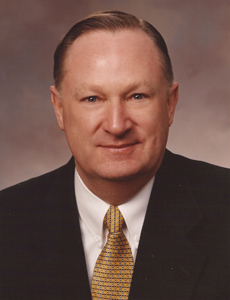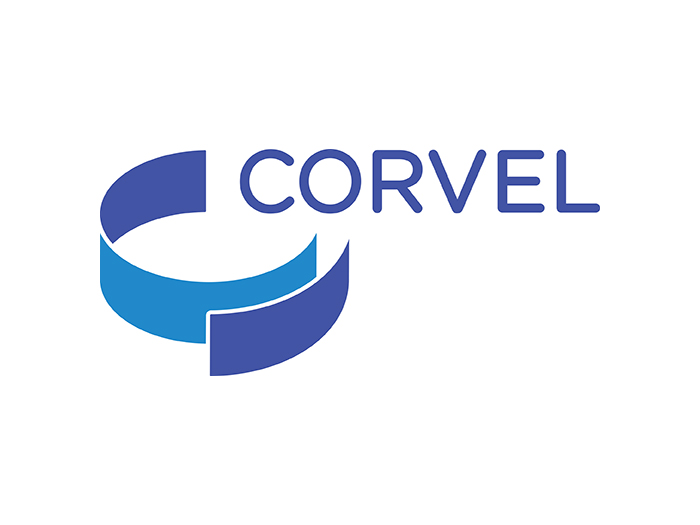TPA Management
A Marriage of Compatibility

For all that modern client and third-party administrator (TPA) interaction depends on technology, compliance expertise, analytics and efficient claims administration, the most important factor in its success is still the partners’ compatibility, industry experts agree.
“It comes back to the relationship,” said Fred Hunt, active past president, Society of Professional Benefits Administrators (SPBA), a national association of TPA firms.
Since the client and TPA can interact daily on government compliance and such delicate issues as fluctuating reserves and claims escalation, “you have to like and trust your TPA,” Hunt said. “It’s like getting married.”
Scott P. Rogers, executive vice president, casualty operations, Sedgwick Claims Management Services Inc., agreed, since in many cases the self-insured employer, insurance collective, union or insurance carrier is entrusting the health of employees to a third party.

Scott P. Rogers, executive vice president, casualty operations, Sedgwick Claims Management Services Inc.
“Companies hire TPAs when they believe the right partner can do a better job dealing with their most important assets, their employees, and their most important constituents, their customers,” he said.
Other than the bread-and-butter claims payment services, Hunt said, clients depend on “ERISA nerds” like his organization’s members to stay in compliance with complex, shape-shifting state and federal laws and regulations. “The TPA will call to say, ‘The IRS just issued this new reg, and we’re going to have to do this or that.’ ”
Companies may delegate because they don’t have in-house expertise, Hunt said, and penalties for violations can be devastating.
Size Matters
The right fit depends on a program customized to the company’s appetite for risk, cost threshold and company culture, said Rogers.
Size and scope matter also, said Richard Messick, specialist leader, Deloitte Consulting. “Larger companies may need a larger TPA with national or even global providers and regulatory experts. Smaller companies with only one or two local locations may do perfectly well with a regional TPA that doesn’t have the broad geographical reach of the larger companies.”
But Rogers said smaller clients, especially those who enhance their buying power by joining captive and affinity groups, such as public university insurance collectives, can benefit from the resources and expertise large TPAs may offer.
 “The smaller clients get the same customization as the big companies,” he said, including access to a broad base of claims expertise, legislative updates and technology advancements. “It goes back to how the client and TPA partner together.”
“The smaller clients get the same customization as the big companies,” he said, including access to a broad base of claims expertise, legislative updates and technology advancements. “It goes back to how the client and TPA partner together.”
Large or small, said Karen Stankevitz, managing director of consulting and analytics, Aptus Risk Solutions, all TPAs have strengths and weaknesses apart from the basic claims-payment services all provide.
“When you assemble your list of requirements in your request for proposals, don’t put down the basics,” she said. Instead, clients should figure out what they need beyond the basics, such as expertise and presence in all 50 jurisdictions or deep and broad contacts within the managed care community.
“Look at their differences,” Stankevitz said. Aptus, a consultant specializing in medical cost containment, claims and litigation management, sees prospective vendors’ strengths and differentiators emerge in sales presentations.
“The more a client asks a TPA to do outside their standard services, the harder it is for the TPA to perform optimally, and the more it will cost to get those services.”
When comparing sales presentations, Aptus suggests that clients may see desirable services one vendor provides that the client may not even have thought about requesting.
Regardless of their size and specialty, prospective clients and TPAs should meet and get to know each other rather than depend on a broker to vet candidates, SPBA’s Hunt said. If possible, clients should pay site visits to their prospective partners’ locations.
Brokers, however, can and do play an important role in partnering clients with the right TPA, said Srivatsan Sridharan, senior vice president, product development, Gallagher Bassett Services. The broker compares the client’s exposure data (such as industry, state and job type) against outcomes from various TPAs to find those with the best track record.
For example, if a client wants to contain medical management costs, the broker could collect data on its exposure in a given state for a given type of claim, then superimpose it on a TPA’s discounts, outcomes and penetration for those bill types in the states where the client operates.
When vetting candidates, said Ivan Dolowich, managing partner, Kaufman Dolowich & Voluck, which specializes in professional lines of business, “it’s good to look at claims systems,” some of which are highly automated and specialized. The industry was slow to invest in technology, he said, and TPAs’ systems are sometimes better than insurers’ legacy systems that they developed on their own and adapted to the type of claims they’re handling.
“At the end of the day, actions speak louder than words. Employers quickly recognize genuine performance.” — Scott P. Rogers, executive vice president, casualty operations, Sedgwick Claims Services Inc.
Not all due diligence is so high tech. In the course of a bidder’s conference, said Rogers, the prospective client and TPA may compare core values and decide their shared cultures bode well for the partnership.
“At the end of the day,” Rogers said, “actions speak louder than words. Employers quickly recognize genuine performance.”
To Bundle or Not to Bundle?
There are pros and cons to bundling and unbundling, said Stankevitz. A client has more buying power if it uses one TPA for multiple lines of business, and it may lose some negotiation leverage if it splits up the concentration. Reporting and analytics may also be better and easier with a single TPA.
“With all data in one system, running reports will be less complicated and more standardized,” she said.
But TPAs have different areas of expertise. “If you’re heavy in products claims,” she said, “you might want to assign that part of your business to a TPA that specializes in that line of business.” And if a client assigns different TPAs to different lines, it has a broader knowledge base, she said.
“If you have two TPAs, you have more resources to ask your questions. It opens up the networking,” she said.
A pilot program may be an option. “You can pilot a TPA in a state or a different line of business to get a sense of how they operate and manage your requests. It will give you a better sense of marketplace.”
Clients should be prepared to invest time and money in the process of unbundling a program, although with good planning the investment should provide returns. Transport operator FirstGroup America unbundled its bill review, pharmacy benefits management, field and case management, independent medical examinations, and occupational and physical therapy services in its self-insured program.
Two and a half years later, Frank Lott, the company’s corporate claims director, reported cost savings, and greater control and flexibility in the providers it chooses for its employees, and far greater transparency in its bill review.
During a Risk & Insurance® webinar, “Succeeding with an Unbundled Claims Management Approach,” Lott said that before unbundling, “We could never get a true understanding of our managed care costs.” After unbundling, the company found “a higher level of expertise in these areas, and they’ve become an extension of our team.”
However, these gains didn’t come without effort. “There’s an implementation phase,” Lott said, to allow each TPA on the team to “talk” to each other electronically.
“You have to look at connectivity. You have to look at how much time and money it will cost to build systems and interfaces. Can all the partners access the different systems?” There was also a training element that involved both the vendors and the TPA. “The goal was to not put additional work on the adjuster’s plate,” he said.
“A company needs to ask itself, ‘Do we have the internal resources to drive an effective program?’ ”
If a company decides to take on this process, said Suzanne Flynn, a webinar participant and senior vice president and risk management consultant for Wells Fargo Insurance Services, it should coincide with the initial execution or renewal of a TPA contract, some of which prohibit unbundling or impose punitive costs or fees, such as an exorbitant $9 per check writing fee.
“A company needs to ask itself, ‘Do we have the internal resources to drive an effective program?’” —Frank Lott, corporate claims director, FirstGroup America
The contractual definition of “managed care” can also catch companies off guard, Flynn said, and may restrict programs without their administrators’ knowledge.
“Is it the traditional definition of fee schedule audit, preferred provider organization and utilization review? Or has the definition been expanded to include things like telephonic case management, field case management, pharmacies and/or durable medical equipment, thus becoming an even greater source of revenue for the entity?”
While some TPA contracts forbid unbundling, in other cases, clients are obliged to unbundle if their TPAs don’t service all their insurance lines, said Deloitte’s Messick. This is especially true for specialty liability lines, such as medical malpractice and directors’ and officers’ insurance.
Watertight Contract
After prospective clients and TPAs perform due diligence and decide they can work well together, they negotiate a contract that assigns their respective roles and responsibilities. The language in the contract should exceed the boilerplate contractual language of most service agreements, and include as much detail as possible, including the performance standards that define the parties’ respective roles, said Michael T. Griffin, partner, Edwards Wildman Palmer LLP in Hartford, Conn., who specializes in insurance law.
For example, he said, if the TPA will maintain a call center, the contract should detail the service standards the TPA must maintain. How many hours will it be open? How many people will staff it? How quickly will the staff answer phone calls? How quickly must claims be paid, or carriers and employees notified of their progress?
“If I’m a national carrier, the TPAs that represent me directly impact my reputation. I want their performance to reflect well on my brand,” he said.
Dolowich, of Kaufman Dolowich & Voluck, said he prefers contract language that defines authority lines and avoids the gray areas that can presage litigation. At what point does the TPA need the client’s approval to expand or clarify its reserve or settlement authority? Are the reserves adequate?
Those service level standards are often addressed in exhibits to the agreement, Griffin said, so if the parties want to tweak the details, they can modify the exhibit rather than amend the body of the agreement.
The contract should also provide for the eventual termination of the relationship, Griffin said, almost like a pre-nup.
“If you’re a carrier at the end of the relationship, the TPA is left with your information. How do you get it back?”
He encourages parties to think up-front about termination and transfer of data. How will information be presented? In hard copy? Pursuant to some system requirement? If costs will be incurred in the transfer of the information to its owner, who incurs those costs?
_______________________________________________________________
Read our three-part claims management series, which focuses on third-party administrators:
 Part I: A Marriage of Compatibility
Part I: A Marriage of Compatibility
Employers must select the TPA best equipped to manage employees’ health and well-being.
 Part II: Best Practices a Moving Target
Part II: Best Practices a Moving Target
The best claims-handling practices depend on hiring good people.
 Part III: Measuring the Unmeasurable
Part III: Measuring the Unmeasurable
Often it’s the intangibles that can make or break the payer-TPA relationship.











